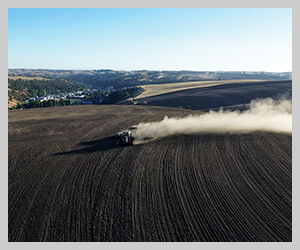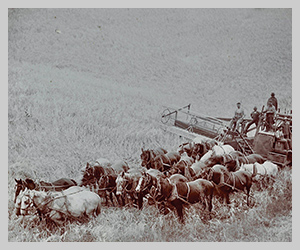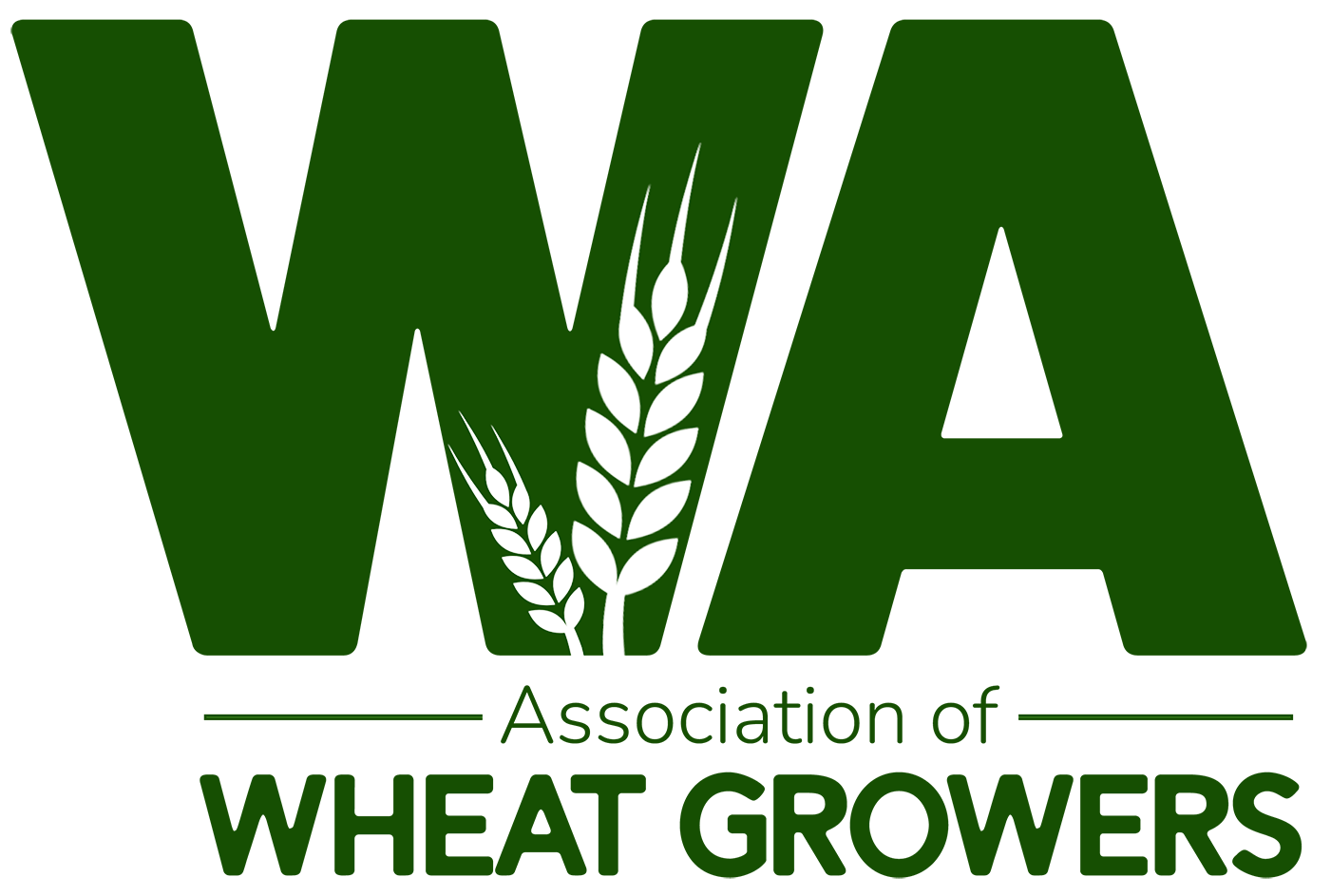Marketing at a glance AMMO session delves into wheat markets at macro and micro levels
2025April 2025
By Trista Crossley
Editor

In mid-February, producers had the opportunity to hear marketing updates at both the macro and micro levels from two experts: Allison Thompson, owner of The Money Farm, and Randy Fortenbery, a professor and the Thomas B. Mick Endowed Chair in Grain Economics at Washington State University. The session was part of the 2025 Agricultural Marketing and Management Organization’s winter schedule.
Marketing at the macro level
As of the U.S. Department of Agriculture’s (USDA) February report, the U.S. was sitting on some pretty big wheat ending stocks, over 700 million bushels, primarily because of higher production in 2024. Winter wheat seeding for 2025 was higher than in 2024, which was surprising.

“That doesn’t necessarily mean we will be booming with production,” Thompson said. “This is just an initial outlook. Higher acres don’t equate to higher yields. When you start getting higher acres, often you are planting more of the fringe areas that aren’t higher yielding.”
The condition of the winter wheat crop varies, but it is down in Kansas and Nebraska. Montana had great seeding conditions, but the crop is still dormant. Thompson told producers to keep an eye on Texas, which had an increase in winter wheat acres, but cold temperatures across the southern part of the U.S. could leave damage.
“There’s a lot of unknowns for the production of wheat,” she said.
Demand remains strong and is running about 9% over last year. Regarding tariffs, Thompson thinks demand will remain, especially in the U.S.’s top market, Mexico, which is losing wheat acres to agave and dealing with drought. Other top markets are also staying strong, including South Korea and Japan.
“I think there is demand out there for quality wheat that will keep things on pace,” she said. “Overall, we are seeing really good demand, and I expect to see that continue going forward.”
Globally, it’s a completely different picture. Ending stocks are moving lower, and the world is looking at the lowest global stocks since 2016. Thompson thinks that should be getting attention, but the market is getting used to tight stocks. Her advice to growers was to watch the global producers carefully.
“I think we are one bad crop, one bad production (year) from an exciting wheat market,” she said. Some of the U.S.’s global competitors to keep an eye on include:
- China. The Chinese are reporting a bumper crop last year despite rumors of lower production, and Thompson expects they will fall to a five-year low for imports. They’ve been importing a good amount of corn from the U.S. and South America, and Thompson wondered, if they have a surplus of wheat, why wouldn’t they be using that instead of importing expensive corn? If you take China out of the picture, global stocks look much tighter.
- India. India is the world’s largest wheat producer and largest wheat consumer. Like China, they don’t generally export their wheat. The country is looking at record production in 2025, but if that doesn’t happen, it could force them to import wheat, which would be positive for global wheat exchanges.
- Russia. Russia has been in the news recently because their exports are slowing, which has a lot to do with production losses over the last few years. If a peace deal between Russia and Ukraine happens, Thompson doesn’t see that having much impact on markets.
- EU. Due to adverse weather, the EU saw lower production in 2024. A lot of their wheat was feed quality. They’ve had similar winter conditions this year, and if they have a second year of lower production, there’s a good chance they might lose their spot as the 6th largest exporter to Argentina.
Currently, the U.S.’s wheat price is competitive with Canada and Australia. Outside influences to watch for include a lower U.S. dollar, food prices, inflation, weather, and outside investor activity.
“I feel like there are so many moving pieces in the background that haven’t gotten market attention that could support market prices going forward,” Thompson said. “I could easily see wheat being the sleeper of 2025.”
Markets at the micro level
Fortenbery said the U.S. is sitting at about a 40% stocks to use ratio, with USDA forecasting an average farm price of $5.55 for 2024-25 (Editor’s note: USDA lowered this to $5.50 in March). Even with a great export environment, it’s unlikely ending stocks will fall below last year because world trade is also down, which is keeping prices lower. One bit of good news is that the U.S.’s global wheat export share has risen over the past four years.

“That’s good for us, getting a larger percentage of total sales. The bigger part of the world market we account for, anything that happens to us affects the world price. That helps us,” he explained.
In white wheat news, carryout is expected to be down significantly while total demand is up, which is positive for the white wheat market. Wheat yields in Washington tend to be more volatile than the national average. The state’s 20-year winter wheat yield average has remained fairly flat at 65.1 bushels per acre. That volatility also translates to average marketing year white wheat prices. Fortenbery said the higher Washington’s percentage to total U.S. winter wheat production, the lower the price premium is over the national price.
“That matters because when USDA tells us their forecast for ANY price, we should be thinking that will be my average year price, so I should beat that. Maybe not $8, but if I beat it by $.50, I should take it,” he said, recommending that producers who are holding last year’s wheat start thinking about how to market it.
The USDA is improving the white wheat forecast, and prices have moved up since the middle of January. Fortenbery thinks the USDA will increase the total white wheat exports over the coming months, which strengthens the argument that basis will improve. The traders say there’s a 75% chance the average December soft red wheat futures price will be below $6.90 and a 25% chance it will be below $4.90 by late fall 2025.
“If I see $6.70 on December 2025 futures, I think that is a place to start thinking about selling some of the 2025 harvest, even though the trades think it might go higher,” he said, adding that growers still holding 2024 wheat should consider pricing it with hedges to arrive.
Regarding Agriculture Risk Coverage (ARC) and Price Loss Coverage (PLC) programs (sign-up ends April 15, 2025), Fortenbery said current prices suggest PLC will not pay, unless Congress agrees to a retroactive increase in the reference price. For PLC, December 2025 futures need to be near $5.75 per bushel at sign-up to suggest a payment.
Some of the risks and opportunities going forward include:
- U.S. domestic policy: New farm bill with possibly a higher reference price; a new ag secretary, which is good because leadership needs to push Congress to get a farm bill on track; tariffs; and management of crop insurance.
- U.S. foreign policy: Our trade position on China and Mexico; Russia/Ukraine conflict (“The market is not even paying attention to that anymore. It’s more about how much wheat will Russia produce, and will they stop exports?”); Middle East; and energy prices.
- Macro-economic factors: Inflation, interest rates, and relative currency values. “We have no influence on these things, but they matter.”















